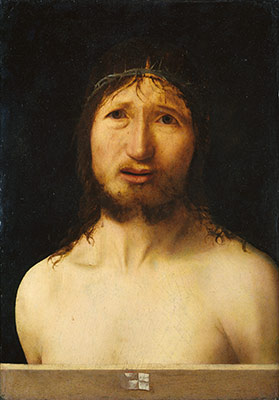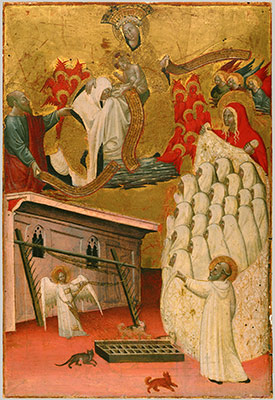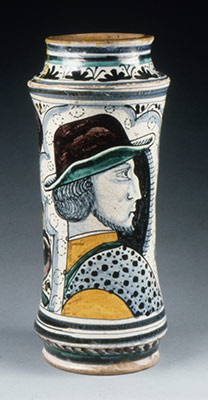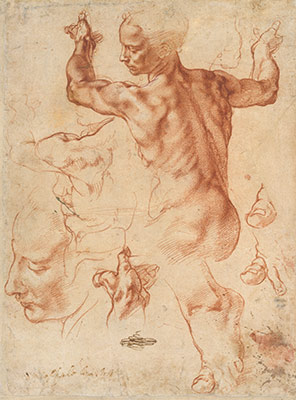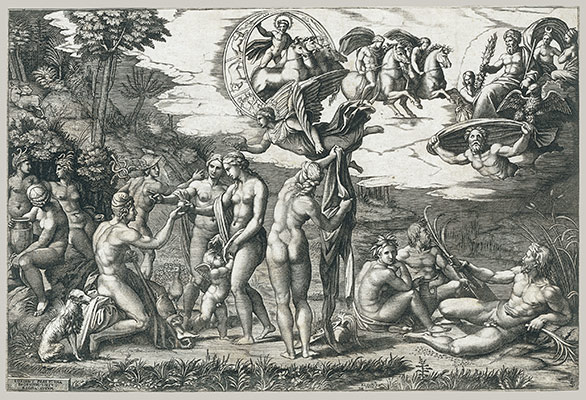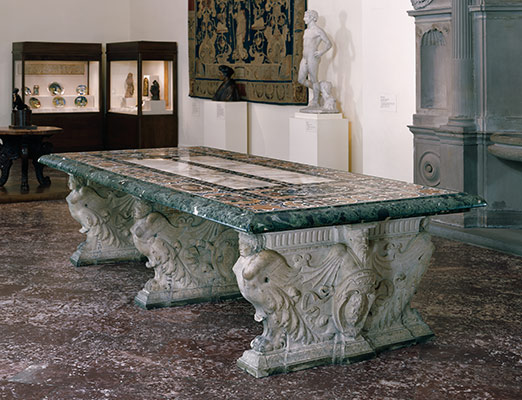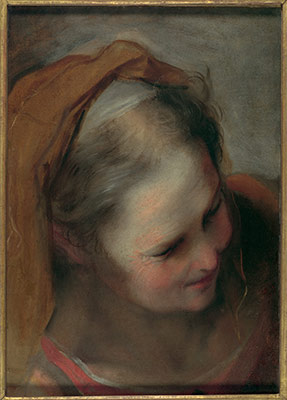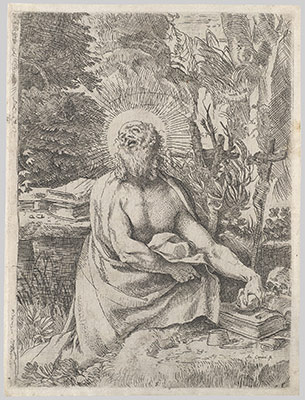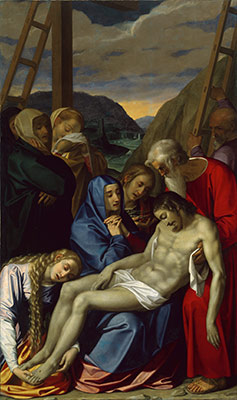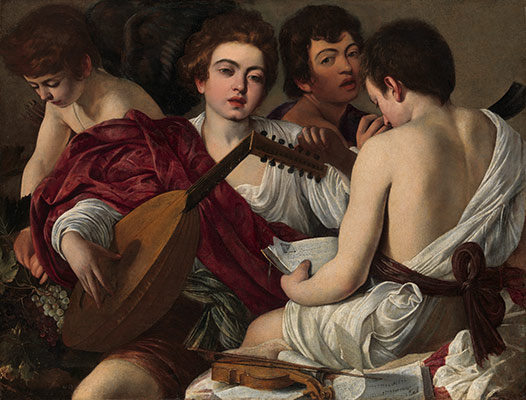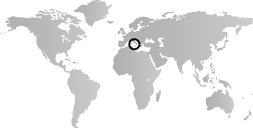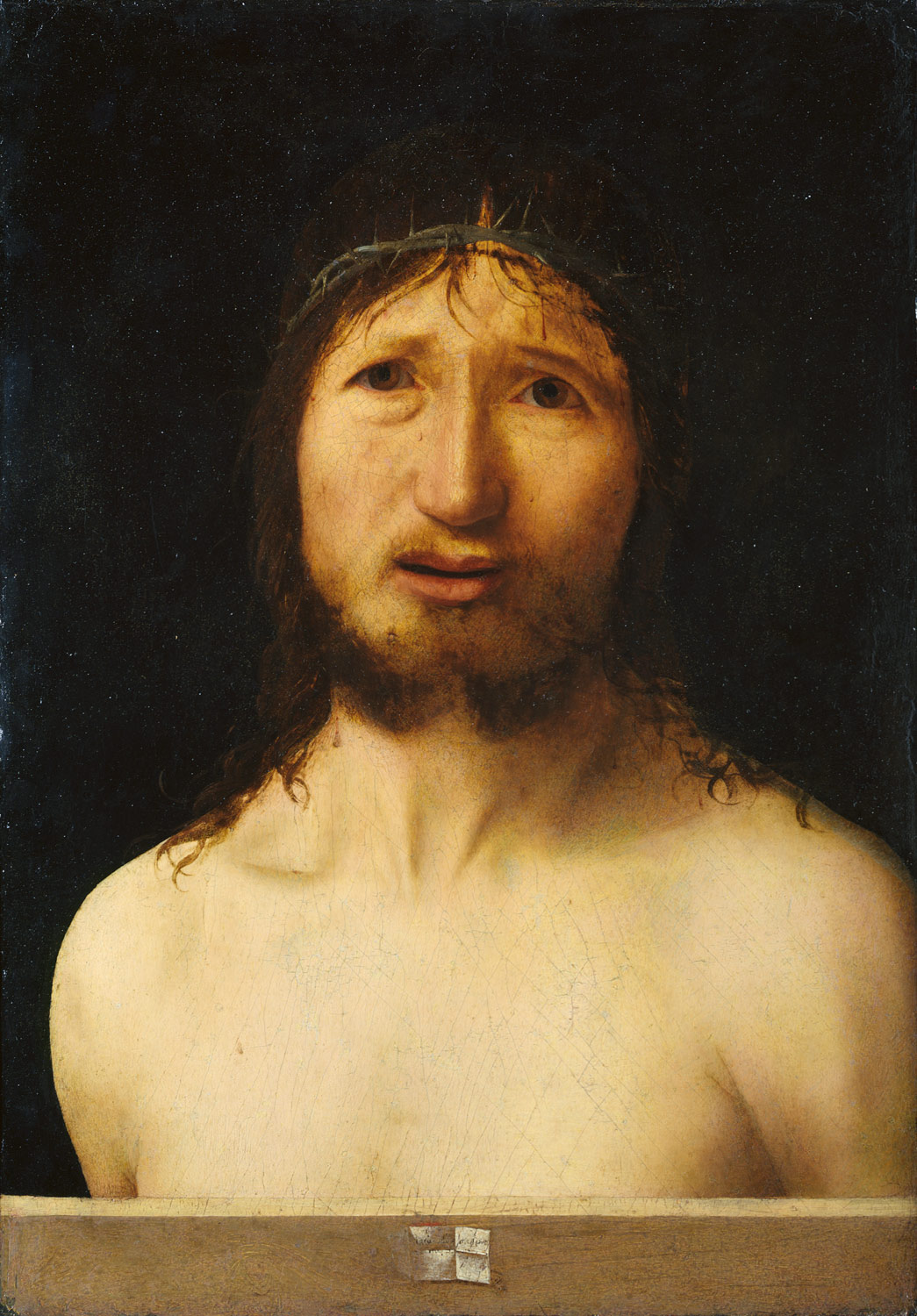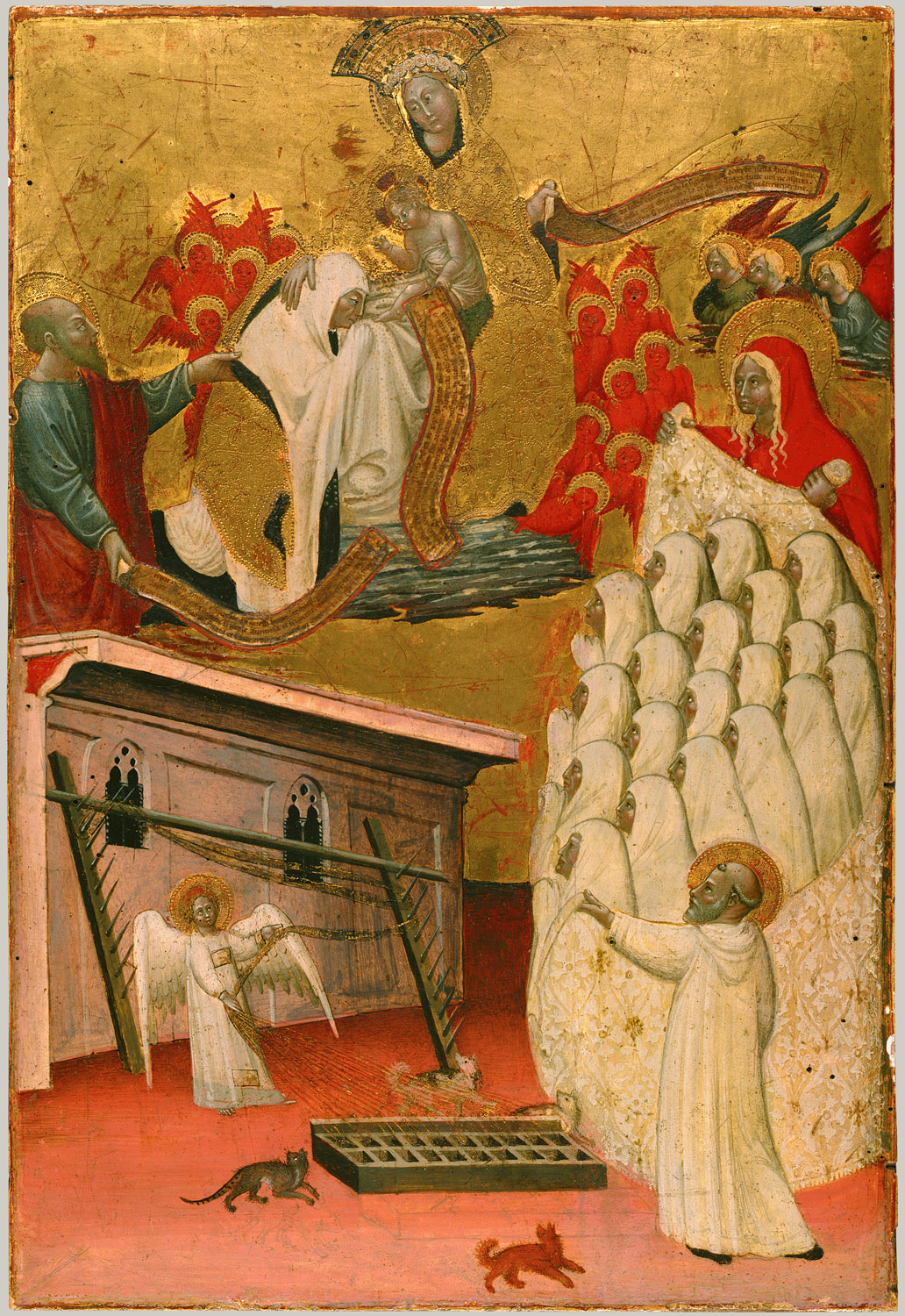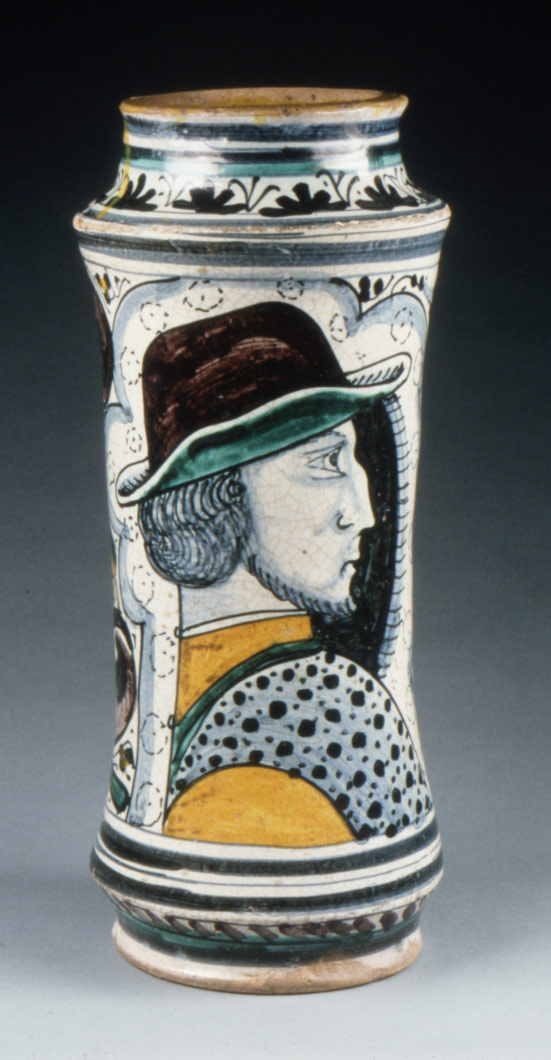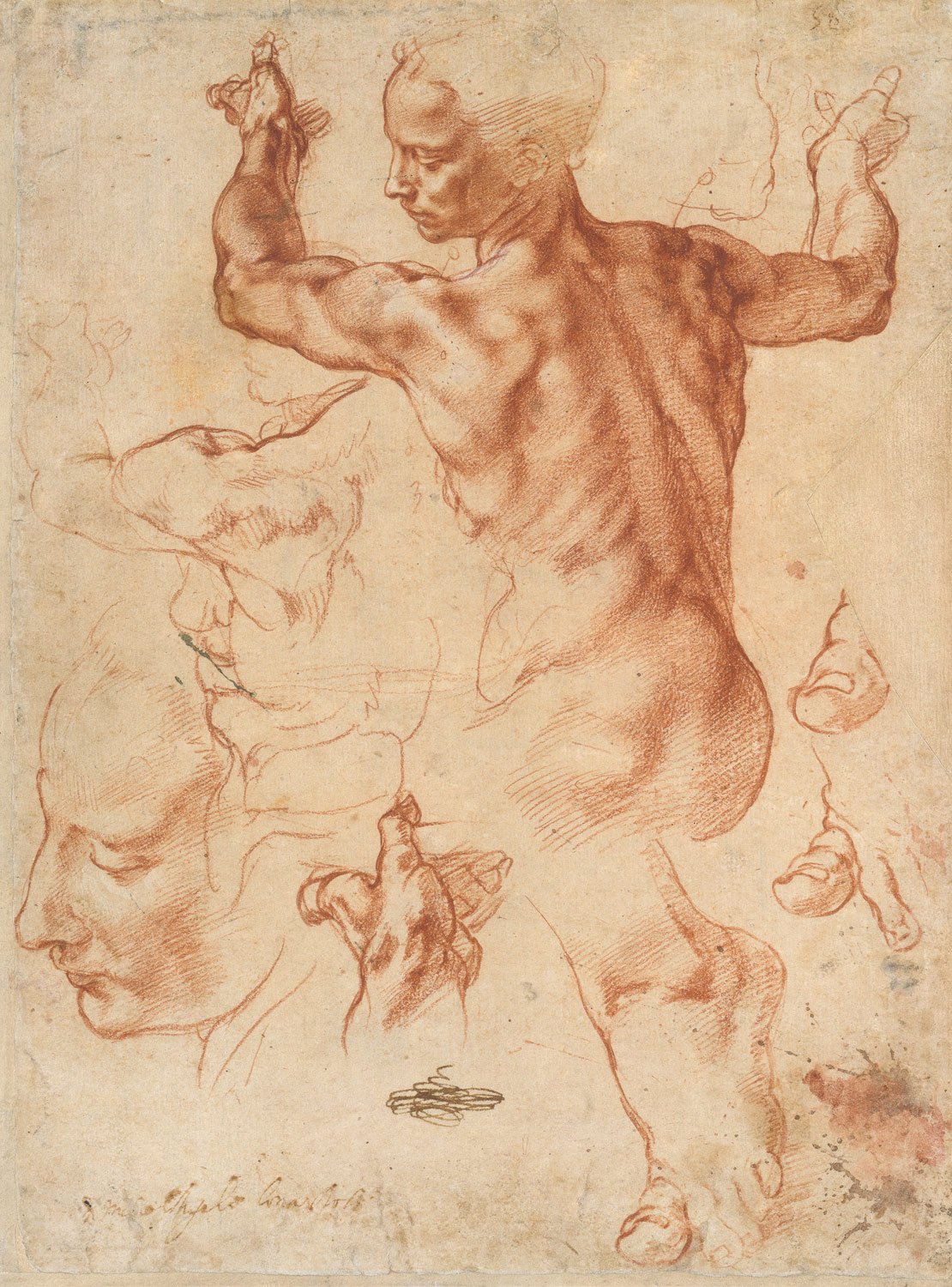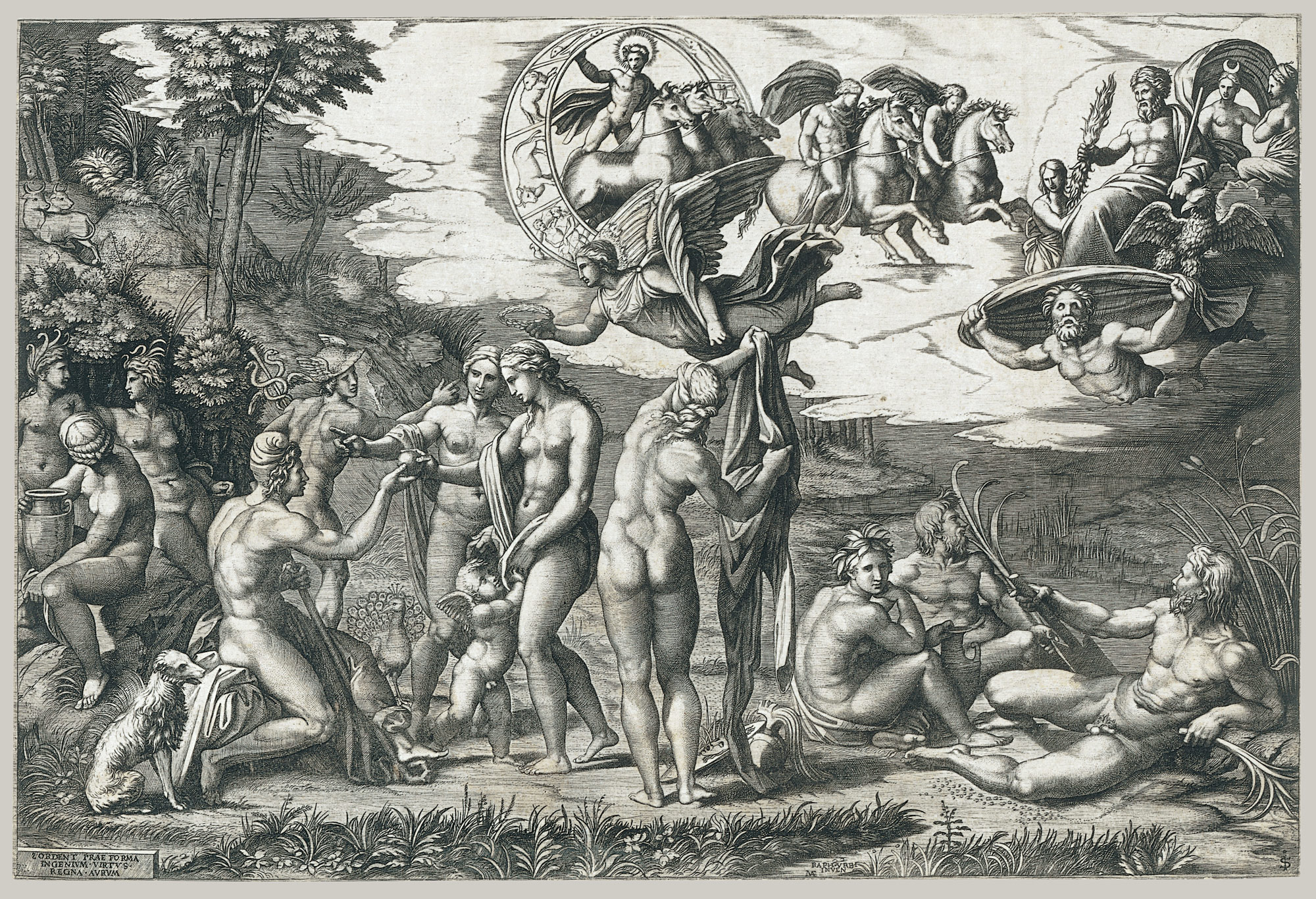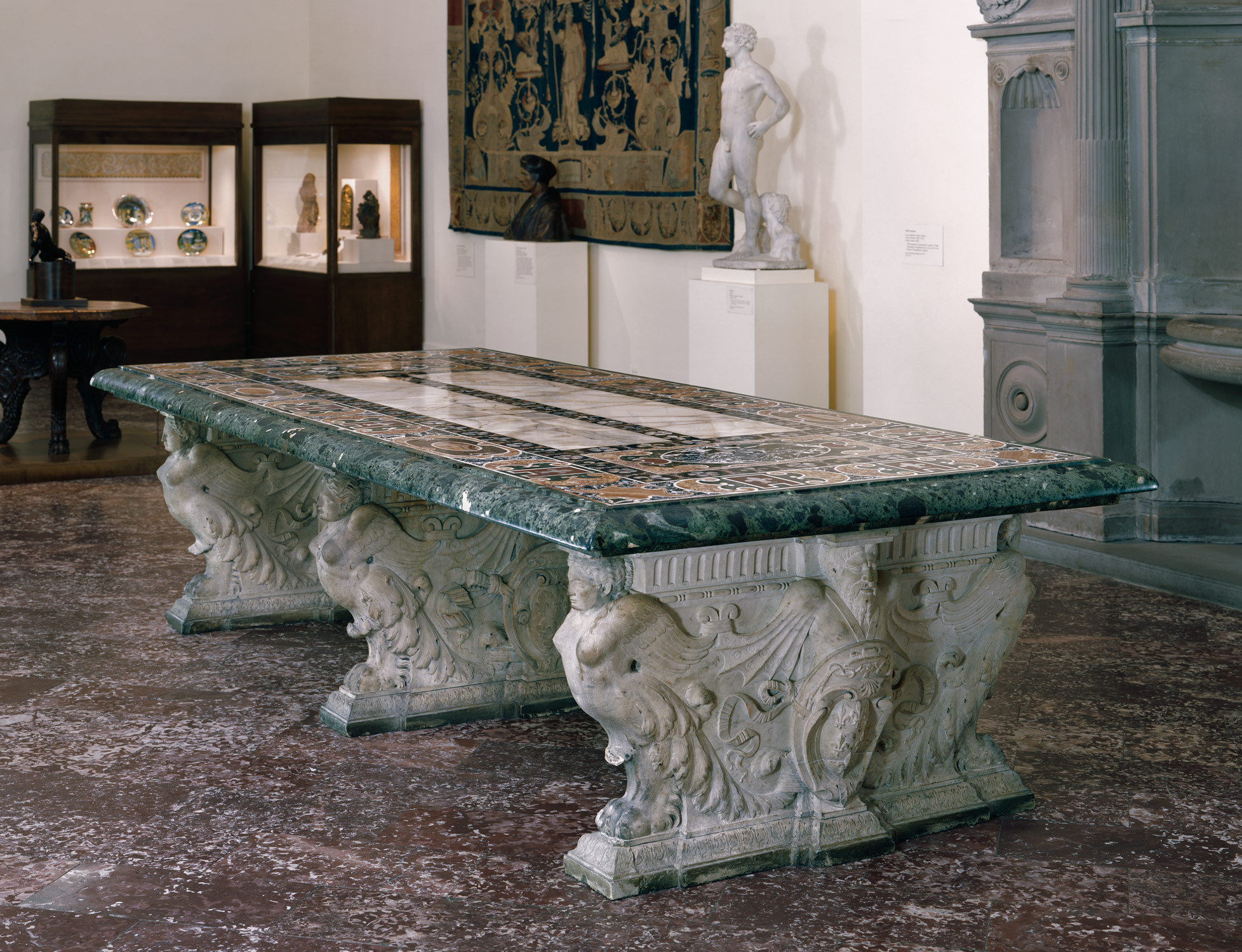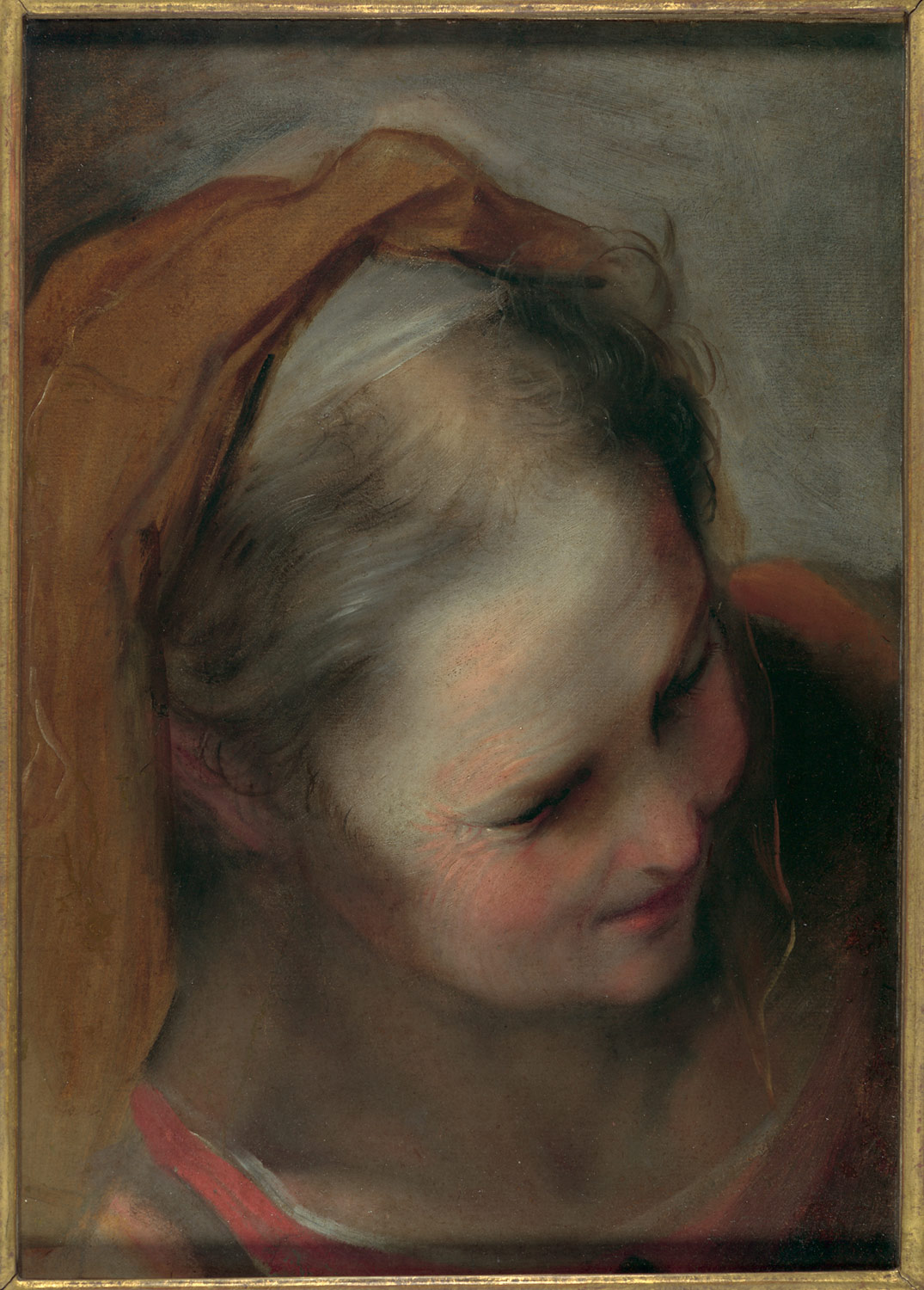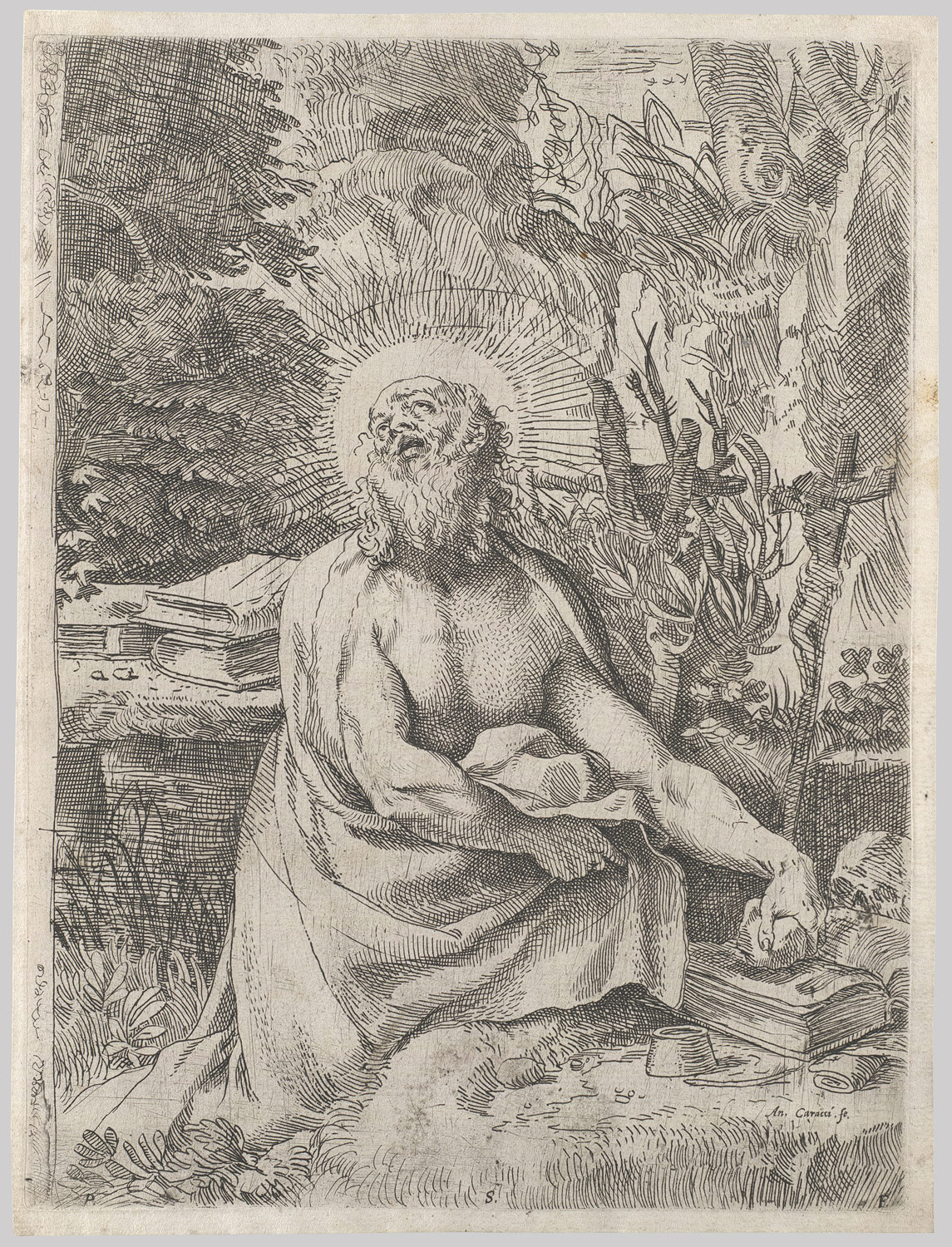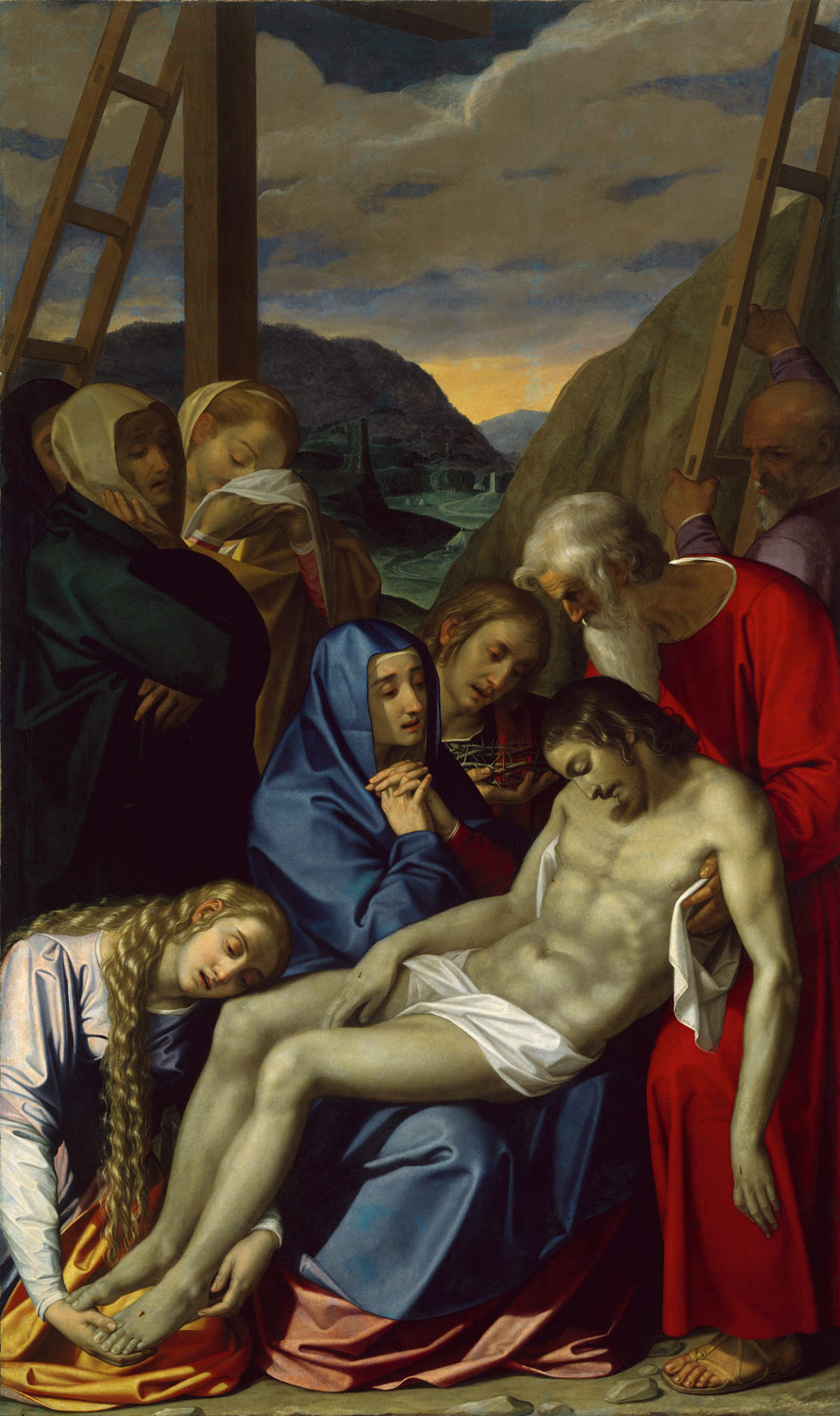This period witnesses the reemergence of Rome—suffering nearly four decades of neglect during the time of the Great Schism—as a major international power. Construction and renovation is funded largely by the popes, many of whom are elected from the country’s wealthiest and most influential families (such as the Colonna, Farnese, and Medici); their collective aim is to renew the city’s link with the classical past, and shape it into a symbol of papal authority which, throughout the period, extends far beyond religious matters into civic administration and political leadership.
Southern Italy, meanwhile, is the site of much unrest as political rivals France and Spain vie for control of the area. The humanistic flourishing and artistic innovations of the Renaissance are slow to reach the south, where a Northern Gothic style predominates well into the fifteenth century. The ultimately victorious Spanish monarchs, however, introduce their taste for both Flemish and Italian Renaissance art to Sicily and the kingdom of Naples, both of which undergo significant urbanization under Spanish rule.
